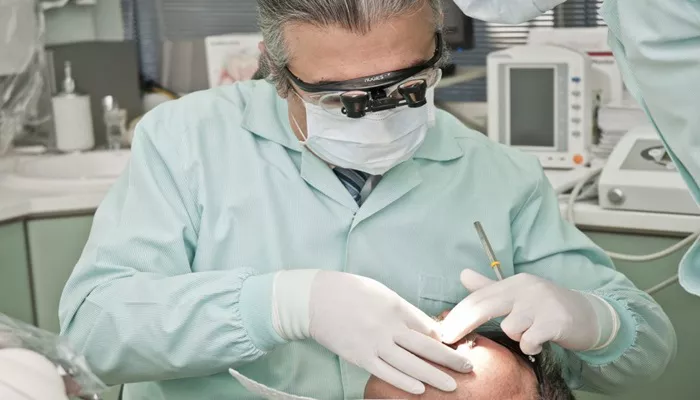Periodontal disease, also known as gum disease, is a serious oral health issue that affects millions of people worldwide. It begins with gingivitis, an inflammation of the gum tissues, and can progress to periodontitis if not treated effectively.
Periodontitis can lead to gum recession, loss of bone around the teeth, and ultimately, tooth loss if not managed properly.
Fortunately, there are various treatments available to address periodontal disease and help restore oral health. This article explores effective methods for fixing teeth affected by periodontal disease, including both non-surgical and surgical options, as well as preventive measures to maintain long-term oral health.
There Are Two Main Stages of Periodontal Disease:
Gingivitis: The early stage of gum disease, characterized by red, swollen, and bleeding gums. Gingivitis is often reversible with good oral hygiene and professional cleanings.
Periodontitis: A more advanced stage where the inflammation extends deeper into the supporting structures of the teeth, including the bone. This stage can lead to gum recession, pockets forming between the teeth and gums, and loss of tooth-supporting bone.
SEE ALSO: The 2 Best Treatments for Periodontal Disease
Non-Surgical Treatments
Non-surgical treatments are typically the first line of defense against periodontal disease. These methods aim to remove plaque and tartar, reduce inflammation, and improve gum health. They include:
1. Scaling and Root Planing
Scaling and root planing, also known as deep cleaning, is a procedure performed by a dental professional to remove plaque and tartar from the teeth and root surfaces. This process involves:
Scaling: The removal of plaque and tartar from the tooth surfaces above and below the gumline using specialized instruments.
Root Planing: Smoothing the root surfaces to eliminate bacteria and promote gum reattachment.
This procedure helps to reduce gum inflammation and infection, and is often effective in managing early to moderate cases of periodontitis.
2. Antibiotic Therapy
In some cases, antibiotics may be prescribed to help control bacterial infection and reduce inflammation. These can be:
Topical Antibiotics: Applied directly to the gums in the form of gels or chips.
Systemic Antibiotics: Taken orally to target bacteria throughout the body.
Antibiotic therapy is often used in conjunction with scaling and root planing to enhance the effectiveness of treatment.
3. Oral Hygiene Instruction
Maintaining good oral hygiene is crucial for managing periodontal disease. A dental professional will provide personalized instructions on:
Brushing: Using a fluoride toothpaste and brushing at least twice a day.
Flossing: Cleaning between the teeth and below the gumline daily.
Mouthwash: Using antimicrobial or fluoride mouth rinses to help reduce bacteria and strengthen teeth.
Surgical Treatments
If non-surgical treatments are not sufficient to manage periodontal disease, surgical interventions may be necessary. These procedures aim to restore damaged tissues, reduce periodontal pockets, and regenerate lost bone. Common surgical options include:
1. Flap Surgery (Pocket Reduction Surgery)
Flap surgery involves lifting the gum tissues away from the teeth to clean and remove tartar from the tooth roots. The gums are then repositioned to reduce the depth of periodontal pockets. This procedure helps to improve gum health and facilitate better oral hygiene.
2. Gum Grafting
Gum grafting is used to address gum recession, where the gum tissue has worn away and exposed the tooth roots. This procedure involves taking tissue from another part of the mouth (such as the palate) and grafting it to the affected areas to cover exposed roots and restore gum tissue.
3. Bone Grafting
Bone grafting is performed to regenerate lost bone around the teeth due to periodontitis. This procedure involves placing bone graft material in areas where bone loss has occurred. Over time, the graft material integrates with the existing bone, promoting new bone growth and improving tooth support.
4. Guided Tissue Regeneration
Guided tissue regeneration involves placing a special membrane between the gum tissue and the underlying bone. This membrane helps to guide the growth of new bone and tissue, allowing for the regeneration of lost structures and improving tooth support.
Preventive Measures
Preventing periodontal disease from recurring or progressing is crucial for maintaining long-term oral health. Effective preventive measures include:
1. Regular Dental Check-Ups
Regular dental visits are essential for monitoring gum health, identifying early signs of periodontal disease, and receiving professional cleanings. Dental professionals can provide personalized advice and interventions to help manage and prevent gum disease.
2. Maintaining Good Oral Hygiene
Adhering to a rigorous oral hygiene routine is vital for preventing the accumulation of plaque and tartar. This includes brushing twice daily, flossing daily, and using mouthwash as recommended by your dentist.
3. Healthy Lifestyle Choices
A healthy lifestyle can positively impact gum health. This includes:
Balanced Diet: Eating a diet rich in fruits, vegetables, whole grains, and lean proteins to support overall health and oral tissue repair.
Avoiding Tobacco: Quitting smoking or using other tobacco products, as tobacco use is a major risk factor for periodontal disease.
Managing Health Conditions: Effectively managing chronic health conditions such as diabetes, which can affect gum health.
Conclusion
Periodontal disease is a serious condition that requires timely and effective intervention to prevent severe complications, including tooth loss. Non-surgical treatments such as scaling and root planing, along with antibiotic therapy, can effectively manage early to moderate stages of the disease. For advanced cases, surgical treatments such as flap surgery, gum grafting, bone grafting, and guided tissue regeneration may be necessary to restore oral health and function.
Preventive measures, including regular dental check-ups, good oral hygiene practices, and healthy lifestyle choices, play a crucial role in maintaining periodontal health and preventing the recurrence of gum disease. By addressing periodontal disease with appropriate treatments and preventive care, individuals can achieve and maintain optimal oral health, ensuring a healthy and confident smile for years to come.

